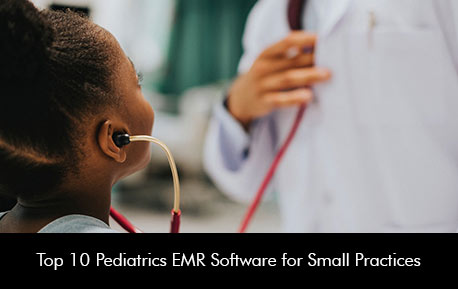Pediatrics practices are responsible for a specific age group and require unique electronic health records software. Because of this intense clinical workflow, a pediatric practices’ clinical and administrative workflow needs to be streamlined. This is where the need for a robust Practice Management (PM) system, preferably integrated with the Electronic Health Records (EHR) software arises.
Pediatric Electronic Medical Records (EMR) Software is designed to have preterm, infant and child growth tracking modules and BMI charts, reporting for physical forms, track of eligibility status, HEDIS immunization compliance, medical billing, practice management, and claim management.
Either Selecting or switching, cost and implementation of an EMR Software for a small practice can be a daunting task. This is the reason why many small practices opt for either a Cloud-Based EMR Software or a Free or Open Source EMR Software (Yes there is a difference). But the latter option often causes more problems and practices are stuck with dead weight and no way out. This is one of the reasons why you should always select a Specialty-specific EMR Software.
Features of Pediatric EHR Software
Before choosing a Pediatric EHR and Practice Management Software, please do make sure that it offers AHRQ recommended en-listed core features:
Templates – Customizable pediatric templates that eliminate repetitive note-taking, easy to navigate and cover all aspects of pediatrics and save time during consultations.
Workflow Management – Pediatric EHR software should be able to deal with recording and storing large volumes of data, document and maintain all the pediatrics related workflows.
ICD/CPT Coding – To make billing and claims accurate and efficient, pediatric-specific ICD-10 coding should be built-in to the Pediatric EMR software.
Immunization – Pediatric-specific EMR Software should incorporate reminders of vaccinations due, alert parents on patient portals, and tracking of immunization in the area in case of a breakout.
Growth Charts – Pediatrics Electronic Medical Records software (EMR) should have functionalities to track the growth chart of each child.
e-Prescribing and Tracking – Pediatric Electronic Medical Records Software should have dosage calculators and drug interaction checking and alert systems to ensure the patient is being treated safely and appropriately.
Pediatrics Dashboard – Pediatrics EMR software must feature a real-time dashboard to clearly view patient charts, profiles, billing processes, scheduling, etc. all in one place.
Well-Visits and Care – Pediatrics EMR software must be able to track signs of risk of any diseases that might run in the family, or just general growth and schedule periodic checkup on newborns and infants even when they are not sick.
Managing Populations Pediatric EHR Software should be able to factor in the at-risk patient population as they require specific attention because of a long-term health condition or on socioenvironmental factors.
Privacy – Pediatrics EMR software should be able to provide personal health information through highly secured HIPAA Compliant channels.
Top 10 Pediatrics EMR Software by EMRSystems
Do keep in mind that selecting a robust Electronic Medical Records (EMR) Software doesn’t always mean that it will be out of budget. Here are our budgeted top picks for your pediatric practice:
-
Athenahealth EMR Software
-
Kareo Clinical EMR Software
-
PrognoCIS EMR Software
-
AdvancedMD EMR Software
-
NextGen Healthcare EHR Software
-
Office Practicum Software
-
Sevocity EHR Software
-
CureMD EHR Software
-
Intergy EHR Software by Greenway Health
Since small practices run on a budget they really need to look at their workflow to determine the clinical and administrative aspects of the EHR Software. Pediatric Practices should consult the vendor to ensure that the software they are choosing provides features designed exclusively for their workflow.







